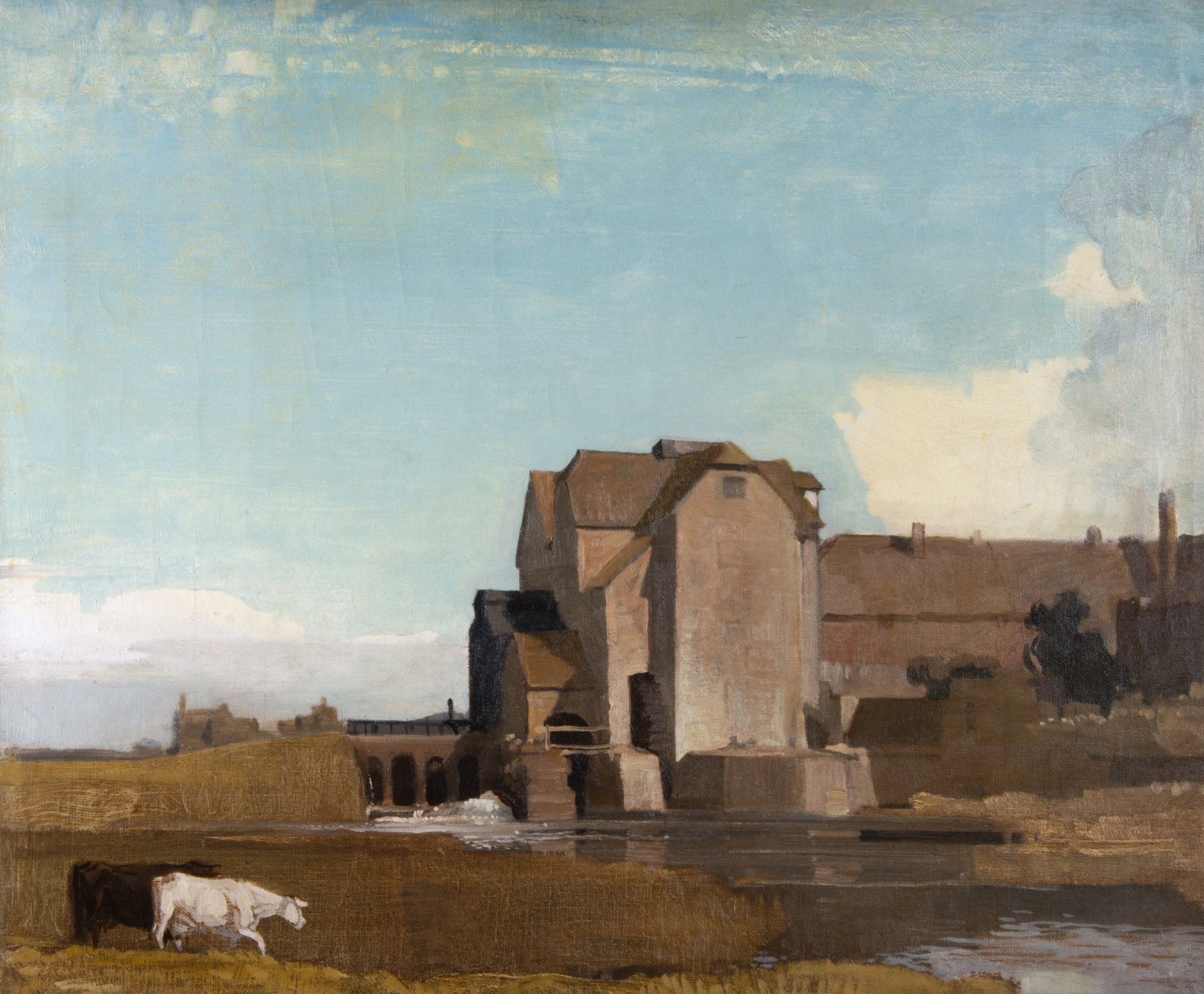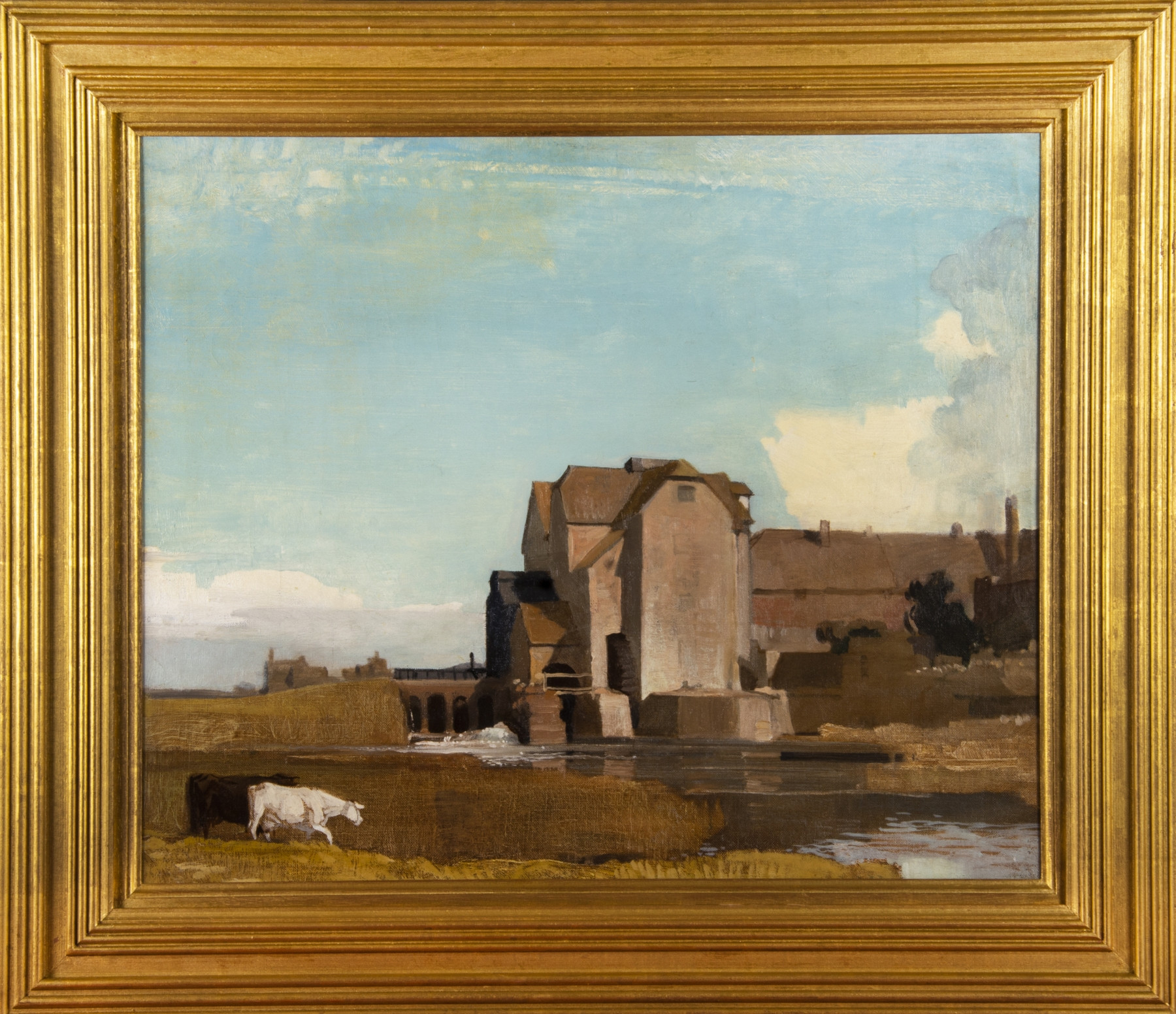

The Abbey Mill, Tewkesbury
During the summer of 1926, Charles Knight went on his second sketching tour of Denbighshire, in northeast Wales. He also took in the English counties along the Welsh border, staying in Malvern, and painting in Tewksbury, Ledbury, Worcester and Powick. While in Tewksbury, he was attracted by the impressive structure of the Abbey Mill, which had closed only six years earlier. Working in emulation of John Sell Cotman, in whose footsteps he had visited Wales, he painted the mill with great clarity, and so created a memorial to a passing age.
In 1190, monks from Tewksbury Abbey had constructed a channel between the Avon and the Severn in order to power a mill to grind their grain. The first mill survived for 600 years, until it was rebuilt and greatly enlarged in 1793 in order to incorporate four wheels. This building became known as 'Abel Fletcher's Mill' from 1856, following the publication of Dinah Craik's novel, John Halifax, Gentleman, which is set in a lightly disguised Tewksbury, and contains among its characters the Quaker tanner, Abel Fletcher. The mill remained in operation until 1920, closing because it could not compete with the nearby Healing's Flour Mill, which was larger and more modern.